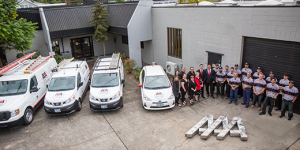How to Troubleshoot an Electric Furnace
Electric furnace troubleshooting is more than identifying quick fixes. It’s also about knowing how to determine what you can remedy on your own and what requires the expertise of a HVAC specialist. By knowing the difference, you’ll save time, keep the heating equipment’s warranty active, and ensure the comfort levels of your home are optimal throughout the heating season.
How to Troubleshoot an Electric Furnace
Begin with the Air Filter
When troubleshooting, start with the simplest remedies first. If your furnace blows cold air or seems to be working overtime, the air filter might be dirty and inhibiting proper airflow. If more than a month has passed since you replaced the air filter, be sure to change it. 
If you notice a lot of dust in and around the air filter’s compartment, turn off the furnace at the service panel and use a vacuum to remove the debris. This will help the furnace run more efficiently.
Check the Thermostat
Batteries
Common furnace problems sometimes originate due to improper thermostat settings and battery problems. If your thermostat isn’t connected to the home’s wiring and runs on batteries, test them. Dead batteries can stop your furnace from functioning. Batteries on their way out can also make a furnace seem as if it’s faulty. If the batteries are older, replace them.
If you continue to experience problems with the thermostat communicating with the furnace and the thermostat is older, you might need to purchase a new one. A HVAC specialist can recommend a thermostat based on your needs and daily schedule.
Thermostat Settings
During the cooler months of the year, your thermostat should be set to “Heat” mode. When it seems as if the furnace isn’t heating your home well, check the temperature. It should be at least 5°F above room temperature. If you have a mechanical thermostat, ensure it is level. Cold air continuing to blow throughout the house could indicate a problem with the thermostat settings, limit control, control board, heat sequencer, loose wire, or a faulty heating element.
If the fan seems to run continuously, ensure the fan is set to “Auto” instead of “On,” “Low,” “Medium,” or “High.” The limit switch under the furnace’s hood should also be pulled out and in the “Auto” position. If the fan does not work, call a HVAC specialist as this may indicate a problem with the fan relay, blower motor, control transformer, or furnace control board.
If your furnace continues to malfunction and the settings on your thermostat are appropriate, and the batteries work well, it’s time to call a licensed HVAC professional for help.
Verify the State of the Circuit Breaker and Fuses
First, verify the furnace’s power cord is plugged into an electrical outlet. If your furnace doesn’t turn on, go to the electrical panel in your home and check the circuit breaker’s position. If the breaker tripped, move it back to the “On” position.
If you have the knowledge and skills, wear the appropriate safety gear and inspect the circuit breaker for signs of damage, such as melted or scorched wires. A voltmeter will help you verify if the circuit breaker is receiving power. You might need to replace the fuse or the circuit breaker. If you don’t have the knowledge and skills to do this, it’s best to hire a licensed professional.
When electric furnace troubleshooting doesn’t solve your heating problems, it’s time to call a HVAC specialist like AAA Heating and Cooling. Our services not only help ensure the health and comfort of your home, but also its safety. Hiring a licensed contractor will also help you avoid voiding a furnace’s active warranty by accident with DIY repairs. Schedule a service today.